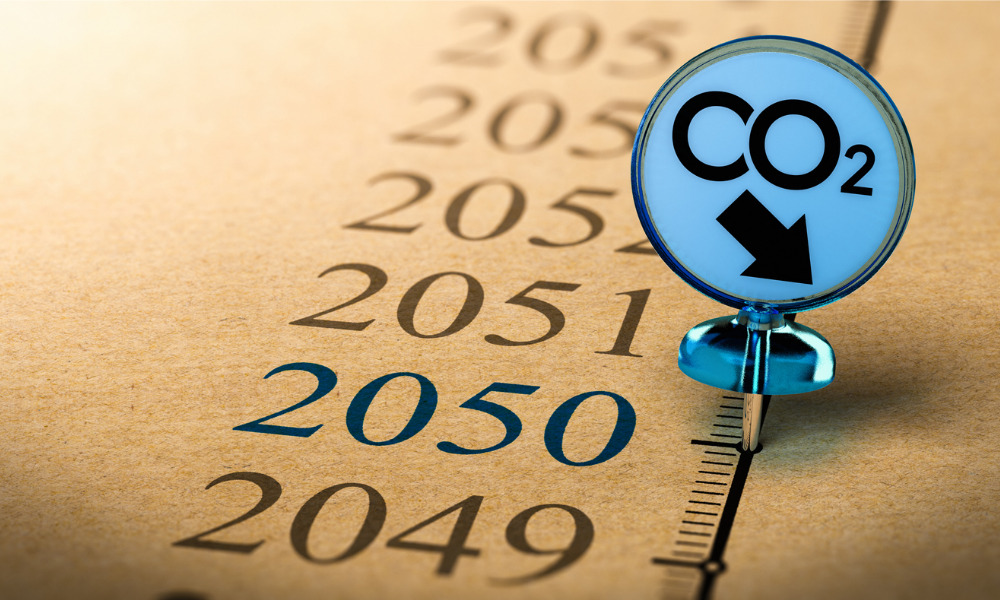With most G20 countries showing an 'ambition gap' on climate action, research finds Canada has a lot of ground to recover

Since October 31, leaders from all over the world have been working to hash out what it would take to save the world from red-alert levels of climate change. The first week of the 26th U.N. Climate Change Conference, abbreviated as COP26, has seen a torrent of statements promising stronger commitments to achieve carbon neutrality by 2050, including pledges to hit ambitious milestones of reduced greenhouse gas emissions in the more near-term time horizon of 2030.
But if recent research published by FTSE Russell is any indication, countries’ actions to curb climate change are far behind what’s needed for them to make good on their promises to the planet.
In its inaugural Net Zero Atlas report, the index provider calculated the implied temperature rise (ITR) associated with the climate goals announced by G20 nations prior to the COP26 summit, particularly their net-zero commitments for 2050 and their interim targets set for 2030.
Based on its analysis, the report found that targets announced ahead of the summit would lead to an average global temperature rise of 2.1 degrees Celsius above pre-industrial levels, well above the 1.5 degrees Celsius set out in the 2015 Paris Agreement.
The report also pointed to an “ambition gap” between 2050 net-zero targets and 2030 nationally defined contributions (NDCs) – non-binding national plans that highlight climate actions – with NDCs implying a temperature 0.7 degrees Celsius higher than their corresponding net-zero pledges.
Based on its models, FTSE Russell found France, India, the U.K., and Italy were the only G20 countries to have 2030 targets that aligned with the Paris Agreement. At the other end of the spectrum, Australia, Russia, China, and Canada all had NDCs with temperature alignments above 3 degrees Celsius.
The report found that Canada’s net-zero pledge declared prior to COP26 corresponded to an implied temperature rise of 2.3 degrees Celsius, while its NDCs were in line with a 3.1-degree Celsius temperature rise. In addition, Canada’s current policies as of the publication of the report actually tracked toward a trajectory of implied temperature rise above 4 degrees Celsius, making it and the U.S. the most off-track when comparing policies with NDC commitments.
Given its reputation for considering issues through a multi-stakeholder lens, Canada certainly has every motivation to be a world leader on ESG issues, including climate. But as noted by Nicolas Lancesseur, senior research lead, Sovereign Climate at FTSE Russell, that will involve transcending the reality of its economy.
“Canada is among the most carbon-intensive economies in the world,” Lancesseur told Wealth Professional. “Oil and gas extraction makes up a significant part of Canada’s economy-wide emissions, particularly if you include fugitive methane emissions. Today, Canada’s average emissions per capita are almost triple the G20 average.”
The country is aiming for a substantial reduction in its emissions. Based on its latest 2030 target, he said the research team at FTSE Russell estimates Canada would have to cut its per capital emissions by half to 10.2 tons by the end of the current decade.
“What is worrying is that the country currently seems off-track to meet this target,” he said. “Indeed, current policies imply that emissions would only fall to 17.2 tons per capita by 2030. This is significantly above the global average of 4 tons CO2e per capita needed by 2030 to limit warming to 1.5 degrees Celsius.”
There’s no questioning the Canadian desire to be part of the solution. Recently, Canada joined 20 other countries that pledged to drastically shift all public investments in fossil fuels into renewables by the end of 2022. While Lancesseur called it “a key move in the right direction,” he stressed that more needs to be done to make significant progress.
“It’s important for such policies to not only focus on power generation but also to look across all industries,” he said. “This should include things like oil and gas exploration, which is particularly relevant to Canada as a significant exporter of fossil fuels, as well as looking at emissions from the forestry and land use sector, again something that is very important in the Canadian context.”



